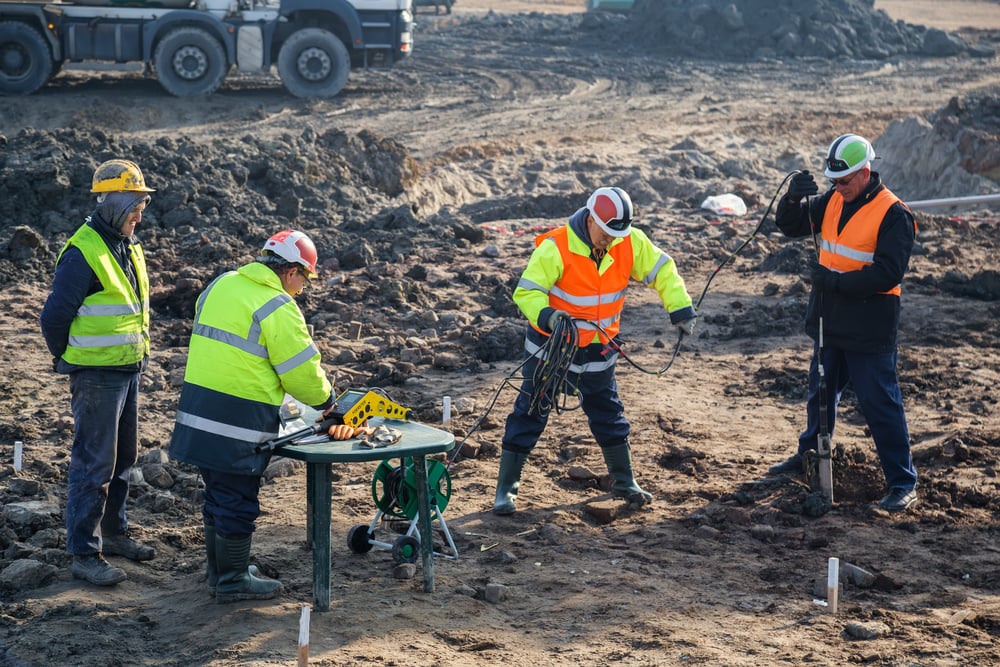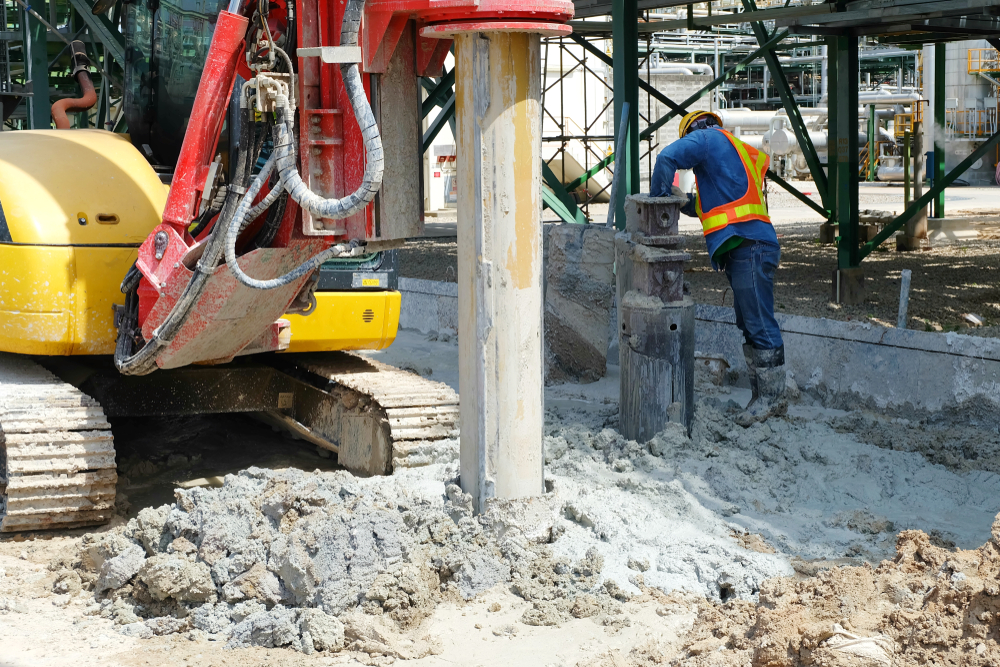The 5-Second Trick For Geotechnical Engineering For Construction Projects
Not known Details About Geotechnical Engineering For Construction Projects
Table of ContentsThe Basic Principles Of Geotechnical Engineering For Construction Projects The Basic Principles Of Geotechnical Engineering For Construction Projects Geotechnical Engineering For Construction Projects Can Be Fun For EveryoneGet This Report on Geotechnical Engineering For Construction ProjectsThe Main Principles Of Geotechnical Engineering For Construction Projects Geotechnical Engineering For Construction Projects for BeginnersSome Ideas on Geotechnical Engineering For Construction Projects You Should Know
Principles and Technique of Ground Enhancement. Ground Renovation Principles And Applications In Asia. Style analysis in rock technicians.Cengage Knowing, Stamford, 666 p. Atkinson, J., 2007. The auto mechanics of dirts and structures. Taylor & Francis, N.Y., 442 p. Drifting Offshore Wind Turbines: Actions in a Sea state Pareto Optimum Designs and Financial Evaluation, P. Sclavounos et al., October 2007. Nicholson, D, Tse, C and Penny, C. (1999 ). The Observational Method in ground engineering principles and applications.
What Does Geotechnical Engineering For Construction Projects Mean?
Lab and field screening plays an essential function in this process. By removing examples from the earth's subsurface and applying a suite of tests, geotechnical engineers can anticipate the behavior of soil layers and assess their suitability for different building efforts. The significance of geotechnical engineering in civil design can not be overstated, attributable to numerous elements: The first step in any kind of geotechnical research study entails figuring out the soil kind at the building and construction site.
The structure acts as the bedrock of any type of construction project. Choosing the appropriate structure type is a choice that hinges on the extensive evaluation given by geotechnical design.

Geotechnical site examination is an essential action in the preparation and execution of any construction job. It entails the collection and analysis of information connected to the physical residential or commercial properties of soil and rock underneath a proposed construction website. This details is vital for the layout and building and construction of safe, secure, and lasting frameworks.
Some Known Questions About Geotechnical Engineering For Construction Projects.
, additionally recognized as subsurface exploration, entails a collection of activities aimed at establishing the dirt, rock, and groundwater conditions at a building site. The main purposes are to identify possible geotechnical dangers, evaluate the design buildings of subsurface materials, and supply referrals for the design and building and construction of structures, keeping walls, and various other frameworks.
The workdesk research study assists in recognizing possible geotechnical concerns and intending the succeeding fieldwork. This includes observing the topography, drain patterns, existing structures, plants, and any indications of instability or erosion.
What Does Geotechnical Engineering For Construction Projects Mean?
Superficial test pits are dug deep into to straight observe and sample the dirt and rock. This technique is beneficial for researching the upper layers of the subsurface and identifying near-surface threats. Non-invasive geophysical techniques, such as seismic refraction, ground-penetrating radar (GPR), and electrical resistivity tomography (ERT), are made use of to map subsurface conditions and spot abnormalities.
Soil and rock examples gathered during the area investigation undergo lab testing to identify their physical and mechanical residential or commercial properties. Usual lab tests consist of grain size analysis, Atterberg restrictions, compaction tests, triaxial shear examinations, and debt consolidation tests. These examinations give necessary data for geotechnical evaluation and layout. The data accumulated from the desk research, site reconnaissance, field examination, and lab screening are examined and interpreted to establish a comprehensive official website understanding of the subsurface problems.
The key advantage of geotechnical site examination is ensuring the safety and security and stability of frameworks. By comprehending the subsurface conditions, designers can make foundations and other structural components that can stand up to the tons and environmental pressures they will go through. This lessens the threat of negotiation, decrease, and structural failing.
Fascination About Geotechnical Engineering For Construction Projects
Recognizing dirt attributes can direct the option of excavation strategies, dewatering approaches, and ground renovation procedures. This makes sure efficient and secure building and construction methods. Geotechnical site examinations are frequently needed by developing codes and laws. Abiding by these needs ensures compliance with lawful and safety requirements, preventing potential legal responsibilities and project hold-ups.
This information is indispensable for project supervisors, designers, and contractors in establishing sensible routines, spending plans, and contingency plans. Geotechnical Engineering for Construction Projects. Skyscraper in a Coastal AreaIn a seaside city, a high-rise property structure was intended on a website with thought loosened sand deposits and a high water table. A comprehensive geotechnical investigation, including borehole drilling, CPT, and geophysical studies, was conducted
The 30-Second Trick For Geotechnical Engineering For Construction Projects
Based upon these searchings for, the foundation design was modified to include deep stack structures expanding right into stable strata, and ground enhancement methods, such as vibro-compaction, were carried out to minimize liquefaction risks. This proactive method made sure the safety and security and stability of the building while preventing expensive post-construction remediation. Infrastructure Advancement on a Sloping TerrainA significant framework task, entailing the building and construction of a freeway and bridges, was intended on a hilly terrain with steep slopes.

The Leaning Tower of Pisa (Italy), a famous architectural marvel, is infamous for its unintended tilt from substantial geotechnical concerns. The tower's foundation was improperly made to take care of the soft, unstable dirt underneath it, resulting in uneven negotiation and its unique lean. Our world is populated with impressive framework projectsfrom towering skyscrapers to stretching bridgesall standing testimony to the advancement of the numerous building and construction devices and techniques offered.
Geotechnical design is a specialized area within civil engineering that focuses on researching the habits check here of earth materials. This branch digs see post deep right into the groundinvestigating how the soil, rock, and groundwater at a construction website can influenceand be affected bythe infrastructure that we put up on and into them. Before a single brick is laid or a concrete structure put, geotechnical designers probe right into the earthgathering critical data regarding the website's dirt composition, rock structure, and groundwater degrees.
The Ultimate Guide To Geotechnical Engineering For Construction Projects

is a device used to evaluate the honesty and load-bearing ability of stacks throughout installation, leveraging the principle of wave proliferation. It maximizes construction performance by providing real-time examinations, hence ensuring safe and reliable pile foundations. One of the useful applications of geotechnical design involves making a decision and implementing the right methods for foundation building.
Load driving represents more than the simple act of putting architectural aspects right into the ground. On the other hand, it is a very carefully coordinated procedure of transferring a framework's lots past the much less secure dirt layers more detailed to the surfacedown to the a lot more significant strata that lie below. In the situation of heap driving, consider how geotechnical designers adeptly utilize this technique to evenly distribute the framework's weight.